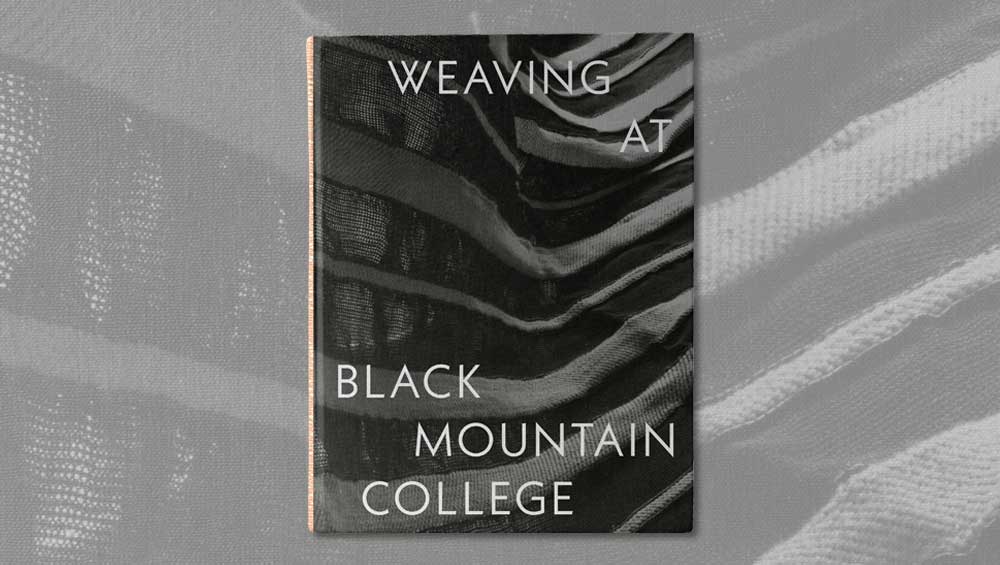
Weaving at Black Mountain College: Anni Albers, Trude Guermonprez, and Their Students, by Michael Beggs and Julie J Thompson, published by Yale University Press.
by BETH WILLIAMSON
A small liberal arts establishment in the mountains of western North Carolina, Black Mountain College, operating from 1933 to 1957, would come to be thought of as one of the 20th century’s most important art schools. When Anni Albers arrived in late 1933, the college was just three months old and was yet to acquire that reputation but its ethos, influenced by John Dewey and AN Whitehead, was “to educate a student as a person and as a citizen”.
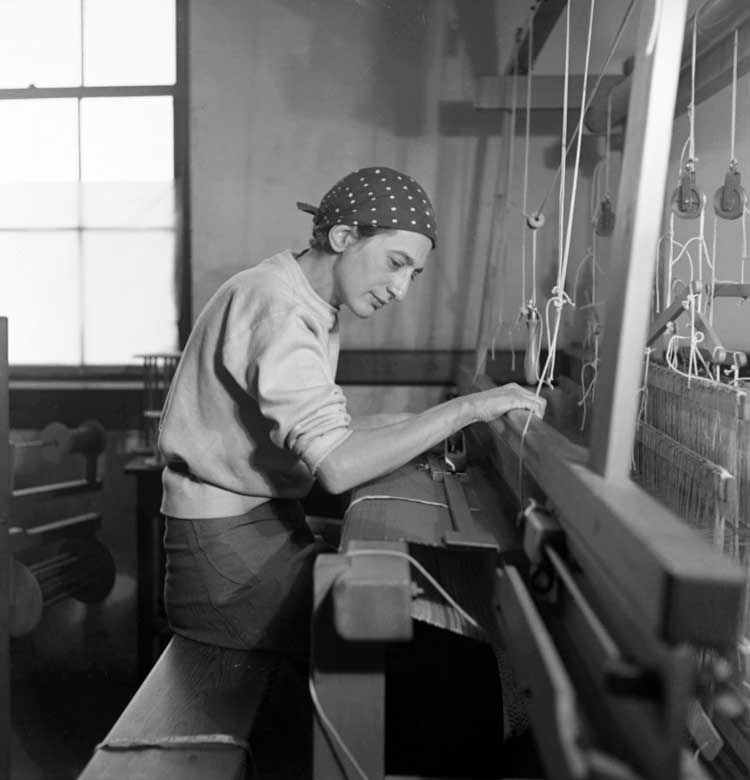
Anni Albers weaving at Black Mountain College, 1937. Photograph by Helen M. Post Modley, Western Regional Archives, State Archives of North Carolina.
Students and staff lived and worked together, sharing meals as well as assisting in the running of the college’s farm and contributing to a programme of building, renovation and maintenance. If the intimacy and intensity of living in such a community became too much, students could always find refuge in their own private study. Josef and Anni Albers joined the college after the closure of the Bauhaus in Germany and whereas the Bauhaus had provided specialist training for artists and designers, Black Mountain College required a broader approach for students, most of whom would not become artists. The emphasis in the teaching was therefore on self-discipline, human perception and its failings, close attention to materials and processes, and a sense of the miraculous in the everyday.
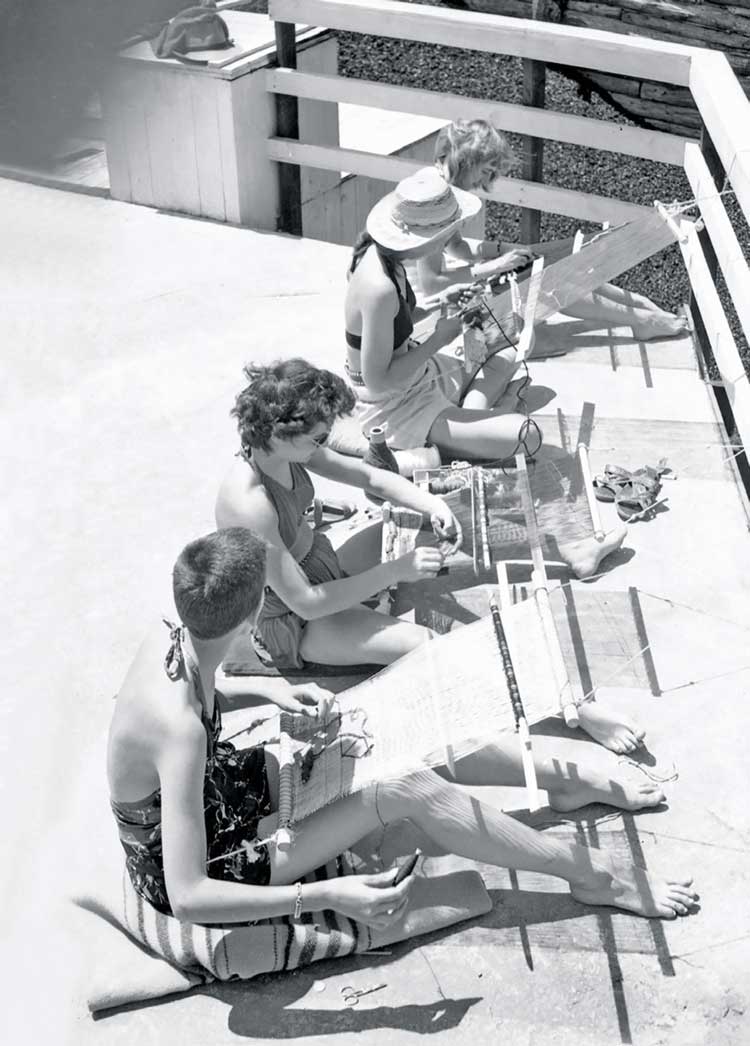
Students weaving on backstrap looms at Black Mountain College, 1945. Photograph by John Harvey Campbell, Western Regional Archives, State Archives of North Carolina.
It was only a few months after her arrival that Anni Albers was teaching weaving and began to shape a weaving programme at Black Mountain College that placed importance on handweaving and the relationship between art, craft and design – it is that story that this book tells. At the outset, Albers had only one loom, which limited teaching activities, as did her unfamiliarity, at that time, with the English technical vocabulary of weaving. New equipment was added and by 1935 the status of the programme was such that Albers was made a member of the college faculty.
Weaving would become the longest running and most successful design subject taught at the college. Albers introduced other looms and techniques, such as backstrap weaving, to enrich and contextualise students’ understanding of their equipment and processes. In parallel to Albers’ teaching in weaving, students also encountered the ideas of Irene Schawinsky and Berta and Bernard Rudofsky, all of whom taught design classes in clothing. Essays by Albers such as “Work with Materials” (1938) and “Handweaving Today” (1941), both reproduced in the present volume, show how she situated her ideas within the college curriculum and in the wider field of design and craft teaching in the United States.
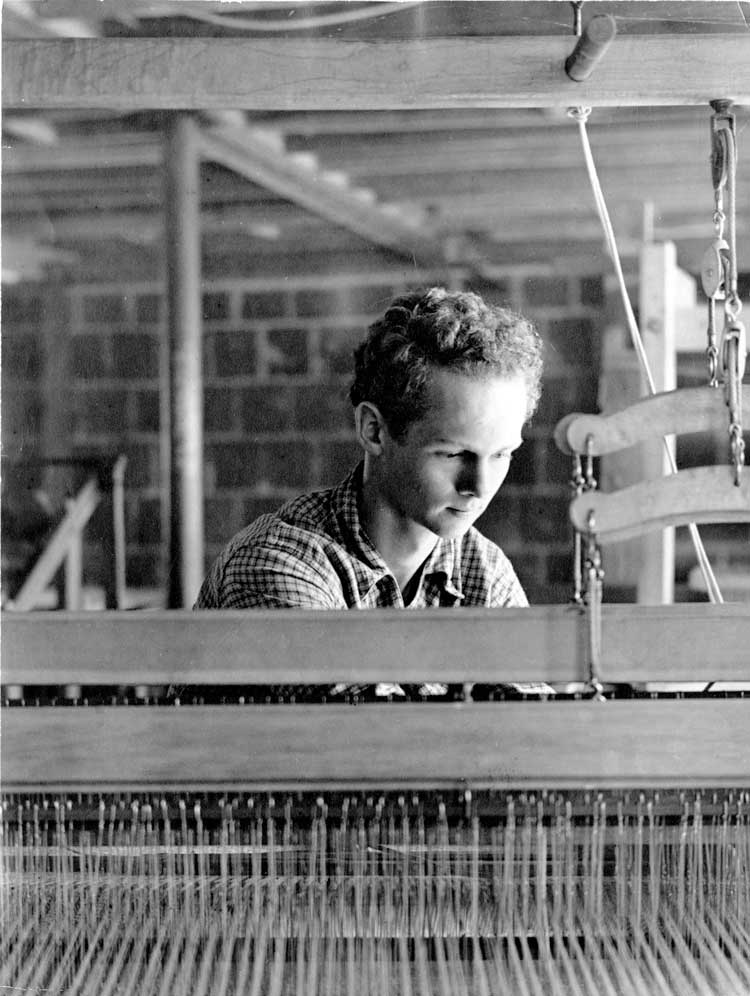
John 'Danny' Deaver weaving, c1941–43. Photograph by Will Hamlin, Martin Duberman Collection, Western Regional Archives, State Archives of North Carolina.
Black Mountain College was a liberal arts college and the weaving programme was interdisciplinary. It was approached with the utmost seriousness for all students, whether or not they were majoring in weaving. From 1940 to 1947 the weaving programme evolved considerably with the acquisition of more looms and the move to the Lake Eden campus in 1941 and a much larger dedicated space for weaving.
With strong links to the textile industry, Albers promoted the programme in national publications and touring exhibitions. Weaving was treated as a design medium and a medium for making art. It was also connected to aspects of the general education at Black Mountain College, providing students with a weaving literacy that informed their work in other disciplines, such as visual art, music, dance and architecture as well as outward into social sciences, literature and mathematics. Important for textile ideas to permeate other aspects of teaching and learning at Black Mountain College was the Harriet Engelhardt Memorial Collection of Textiles, mainly from Mexico and South America. It was Albers who ensured the future of this collection by securing it a home at Yale University Art Gallery when the college closed.
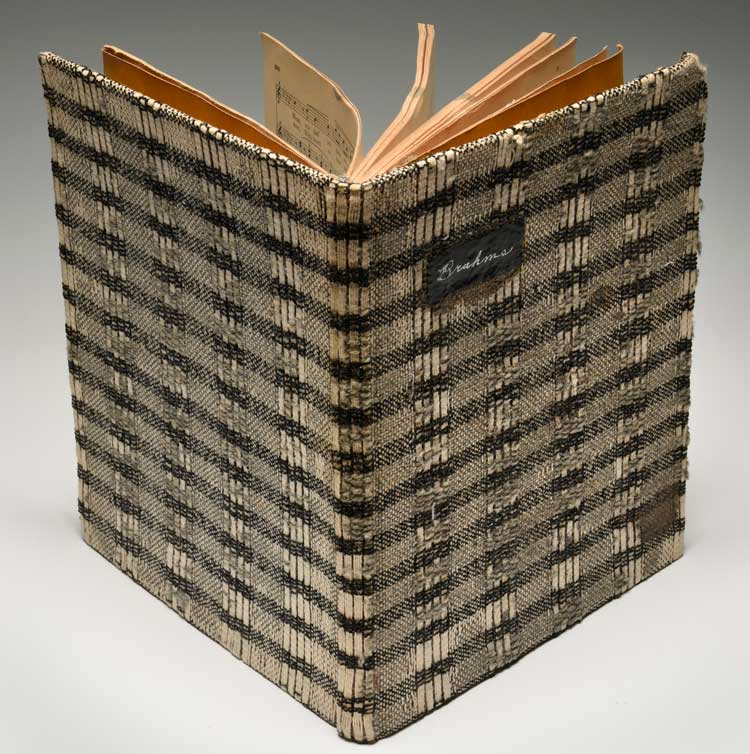
Janet Heling Roberts, Bookbinding: Johannes Brahms: Fifty Selected Songs, c1945. Paper, thread, and handwoven bookcloth, 12 x 10 x 1 1/8 in. Collection Black Mountain College Museum + Arts Center.
Albers created the weaving programme, but she did not teach it alone. Trude Guermonprez and Franziska Mayer were hired when Albers was on sabbatical from the autumn of 1946 to early 1948. When Albers returned, Mayer left and later established a weaving workshop in Peru. Guermonprez stayed on to do most of the teaching while Albers prepared for a solo exhibition at the Museum of Modern Art in 1949. It was a time of intense personal growth for all three women.
Guermonprez had previously worked as a textile designer in industry. At Black Mountain College, she had the freedom to engage in more expressive designs and encouraged her students to do likewise. In 1948, she created Leaf Study, a work she would later call her first “textile graphic”. Although she taught at Black Mountain College only from 1947 to 1949, Guermonprez went on to teach in California at Pond Farm (1949-51) and for many years at California College of Arts and Crafts (1953-79) and her voice can be heard in her talk “Design”, given in 1952 and reproduced in this publication. The weaving programme’s final six years saw some movement in faculty, an engagement with synthetic materials and encounters with ancient materials that, for some, would have a long-lasting impact.
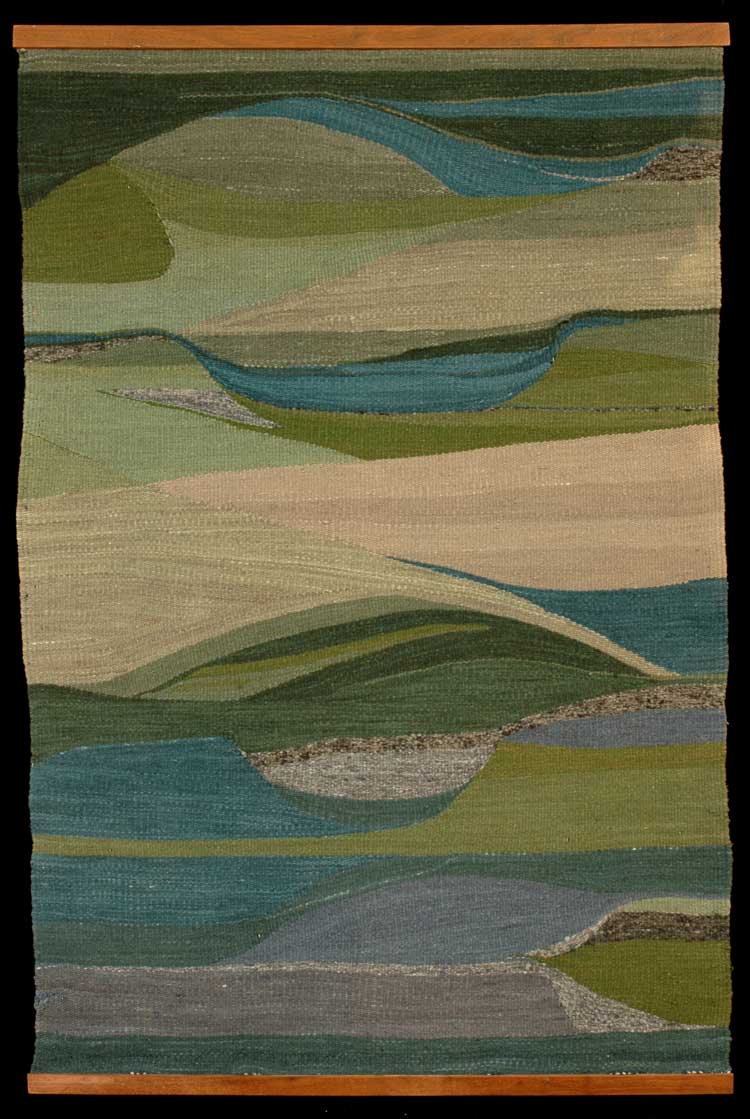
Joan Potter Loveless, Bay Area, c1960-70. Wool, 56 x 37 in. Collection Black Mountain College Museum + Arts Center. Photograph by Alice Sebrell.
Looking beyond the life of Black Mountain College, which closed in 1957, the legacy of its programme can be seen in the work of its students, such as Joan Potter Loveless and Andy Oates, as well as the continuing careers of its teachers. In the 50s, Albers gave individual lessons at her home for selected students, among them Sheila Hicks, Dolores Dembus Bittleman and Dorothy Cavalier Yanik. In 1965, Albers published her book On Weaving, set to become a seminal text on weaving and design theory. Four years later, in 1969, she made her last weaving before turning to printmaking and graphic arts. Meanwhile, Guermonprez had a long and successful tenure at California College of Arts and Crafts and a family tree of former students who themselves went on to teach. The use of found materials was a hallmark of art and design teaching and making at Black Mountain College. The legacy of that practice can be seen in the work of Robert Rauschenberg and others. Merrill Gillespie, a music composition student at the College in the 1950s who had studied weaving with Oates in 1950 and 1951, later went on to contribute a section to the 1992 Aids Memorial Quilt. The book closes with a short chapter on the work of four contemporary artists whose work connects and responds to the legacy of Black Mountain College. Through concept, structure and intuition, Jen Bervin, Porfirio Gutiérrez, Susie Taylor and Bana Haffar all link to this legacy in different ways.
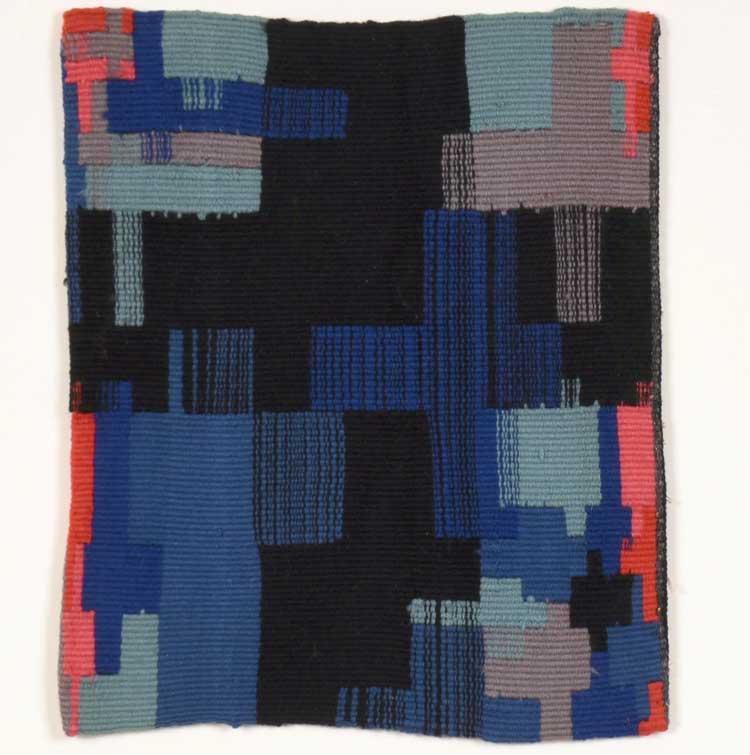
Elizabeth Schmitt Jennerjahn, Cross, 1949. Wool, 12 1/2 x 10 in. Collection Black Mountain College Museum + Arts Center.
The striking black-and-white-textured cover of this book evokes woven cloth from the moment you pick it up, so its subject is never in doubt. Its structure and narrative are helpful in setting out the important connections and events at Black Mountain College and the significance of the weaving programme for all students. It is clear that the teaching of Albers, Guermonprez and their students has had a lasting effect on theory and practice and that is underlined in the closing chapter that addresses the responses of contemporary artists.
The book is peppered with images that add to the narrative, both in terms of images of artworks and archival images. The latter, including a wonderful photograph of faculty and students dancing on the porch of Lee Hall at the college, give some sense of what life there must have been like. It is a fascinating tale made all the richer for the fuller understanding of the contribution of Albers and Guermonprez that this book so eloquently provides.
• Weaving at Black Mountain College: Anni Albers, Trude Guermonprez, and Their Students, by Michael Beggs and Julie J Thompson, is published by Yale University Press, price £30 ($40) (hardback).
• An associated exhibition of the same name is showing at Black Mountain College Museum + Arts Center, Asheville, North Carolina, until 6 January 2024.